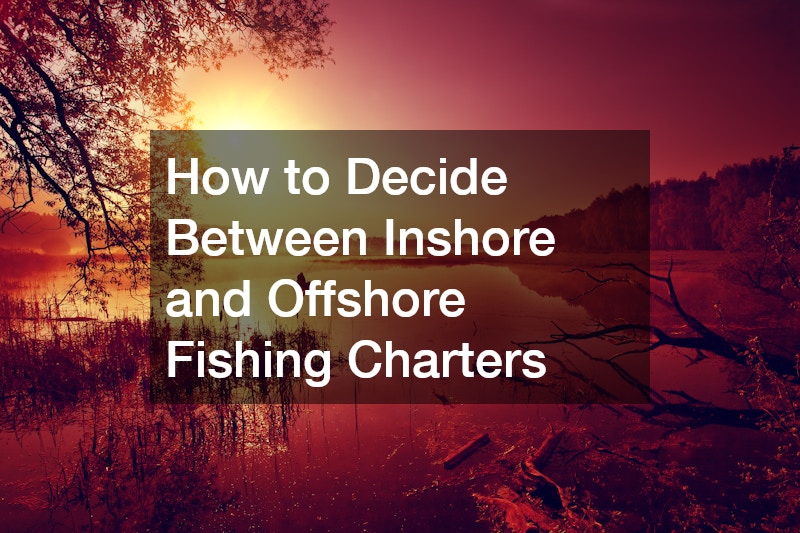As the coastal city of Galveston continues to attract fishing enthusiasts from around the world, the popularity of Galveston fishing charters is on the rise. The decision between inshore and offshore experiences is one that many anglers face. This article aims to guide readers in making an informed choice based on their individual preferences and needs, ensuring a rewarding and enjoyable fishing excursion.
What Are the Key Differences Between Inshore and Offshore Fishing?
Inshore fishing, typically conducted in waters less than 30 meters deep, offers a vastly different experience compared to offshore fishing, which takes place far from the shore in deeper waters. Inshore trips are often shorter and focus on species such as redfish, trout, and flounder, which thrive in the shallower waters near the coast.
In contrast, offshore fishing targets bigger game like tuna, marlin, and mahi-mahi, known for their size and challenge.
The advantages of inshore fishing include the relatively calm waters and shorter travel time, making it accessible even for those with limited sea experience. Anglers looking for a relaxed, family-friendly outing frequently opt for inshore charters, as they are typically less expensive and require less intensive gear and preparation. On the downside, the variety of fish and the thrill of larger catches are limited compared to offshore fishing.
Offshore fishing is renowned for its adventurous spirit and the potential for capturing trophy fish. The vastness of the open sea can present challenges, including rougher waters, longer trips, and the necessity for more specialized equipment. However, for those seeking a memorable, adrenaline-fueled experience, the rewards of an offshore fishing charter can be unparalleled, with the chance to hook impressive species being a major draw.
Which Type of Galveston Fishing Charter Is Best for Beginners?
For newcomers to the world of fishing, inshore charters often represent the best starting point. The simpler set-ups, shorter trip durations, and gentle learning curve make inshore fishing particularly accessible. Beginners benefit from more direct supervision and guidance from captains and crew, who can provide valuable insights and hands-on instruction in a more controlled environment.
Another advantage of inshore fishing charters is the reduced risk of seasickness due to calmer waters, ensuring a comfortable outing for novices and young anglers. The proximity of these fishing grounds to the shore also means that trips can fit into a broader range of schedules. Equipment requirements for inshore fishing are minimal compared to those needed for offshore adventures, reducing the initial investment and complexity for beginners.
While offshore fishing offers excitement and the potential for larger catches, it may be more suited to those with at least some foundational skills or previous exposure to fishing. Beginners considering offshore charters should be prepared for the physical demands and the additional time commitment required. For those wanting to experience offshore fishing without diving in completely, booking a mixed charter could provide a taste of both worlds.
How Do Weather and Seasonal Factors Affect Inshore vs. Offshore Fishing?
Weather and seasonal variations significantly influence the success and enjoyment of both inshore and offshore fishing experiences. Inshore fishing tends to be more affected by local weather changes, such as rainfall or sudden temperature shifts, which can alter fish behavior and their feeding patterns. However, inshore waters warm up quickly in the spring, offering an early start to the fishing season.
Seasonal cycles impact target species differently between inshore and offshore environments. For instance, inshore species such as speckled trout and redfish are often more plentiful in the fall, making this a desirable time for inshore charters. Conversely, offshore fishing in Galveston sees ideal conditions during the warmer months when larger fish migrate closer to the Texas coast.
Both types of fishing experience require careful planning around tidal patterns and weather forecasts. Offshore trips are especially sensitive to high winds and storms, given the open water exposure. Understanding these factors helps anglers select the opportune times for their preferred fishing excursions, ultimately enhancing the charter experience and potential yield.
Conclusion
Deciding between inshore and offshore Galveston fishing charters involves considering the differences, beginner suitability, and weather influences that each option entails. Ultimately, the choice hinges on personal preferences, desired fishing experiences, and readiness to tackle the challenges of each environment. Whether seeking a calm, exploratory day on inshore waters or the dynamic excitement of the open sea, Galveston offers a rich variety of fishing opportunities for every angler.





